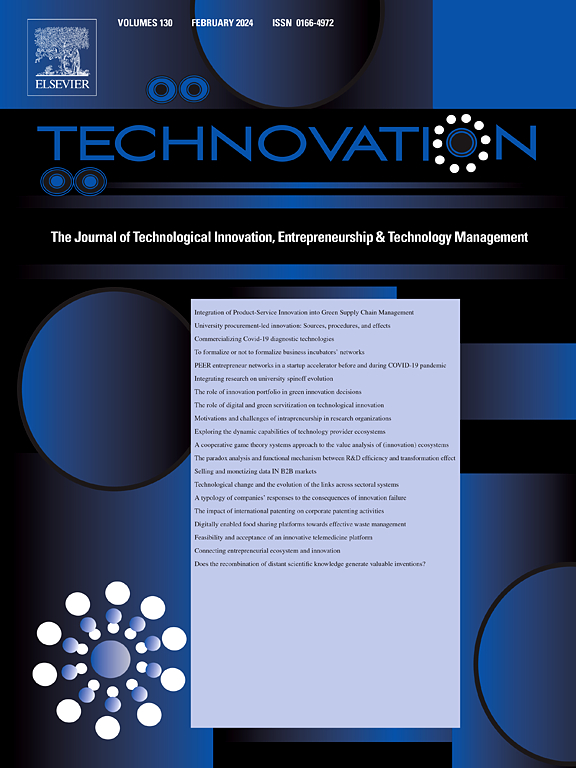节能技术扩散的变点模型:经验模型的比较评价
IF 10.9
1区 管理学
Q1 ENGINEERING, INDUSTRIAL
引用次数: 0
摘要
节能技术(EETs),如电动汽车(ev)和光伏(PV)太阳能装置是快速发展的领域,正在彻底改变我们使用和生产能源的方式。这些技术的全球出现显著减少了温室气体排放、全球变暖、空气污染、石油消耗和对化石燃料的依赖。然而,采用这些技术也引起了人们对能源公平的担忧,并引发了一个根本性的问题,即节能产品应该如何在社会上传播。准确预测环境友好型技术的销售轨迹对其持续发展至关重要。本研究旨在建立一个灵活的变化点模型,通过随机捕获采用率随时间的演变,成功预测节能技术创新的扩散范式。使用电动汽车(ev)和光伏(PV)太阳能装置的历史销售数据对所提出的模型进行了实证检验。利用熵排序(ER)和方差排序(VR)两种定量指标,比较了模型的鲁棒性和预测性能。评估不同的经验模型可以帮助确定最适合特定创新和市场的模型。研究结果表明,所建立的模型具有较好的估计和预测能力。本文章由计算机程序翻译,如有差异,请以英文原文为准。
Changepoint model for energy-efficient technology diffusion: A comparative evaluation of empirical models
Energy-efficient technologies (EETs) such as electric vehicles (EVs) and photovoltaic (PV) solar installations are rapidly growing fields that are revolutionizing how we use and produce energy. The global emergence of these technologies has significantly reduced greenhouse gas emissions, global warming, air pollution, oil consumption, and dependence on fossil fuels. However, adopting these technologies has also raised concerns about energy justice and has sparked a fundamental question about how energy-efficient products should be disseminated in society. Accurate forecasting of the sales trajectory of environmentally friendly technologies is crucial for their continued development. The present research aims to develop a flexible changepoint model that can successfully forecast the diffusion paradigm of Energy-efficient technological innovations by randomly capturing the evolution of adoption rates over time. The proposed model is empirically tested using historical sales data of Electric vehicles (EVs) and photovoltaic (PV) solar installations. The robustness and prediction performance of the proposed model are compared with conventional models using two quantitative measures: Entropy Ranking (ER) and Variance Ranking (VR). Assessing different empirical models can help identify the most suitable model for specific innovations and markets. The finding suggests that the developed model has superior estimation and prediction capabilities.
求助全文
通过发布文献求助,成功后即可免费获取论文全文。
去求助
来源期刊

Technovation
管理科学-工程:工业
CiteScore
15.10
自引率
11.20%
发文量
208
审稿时长
91 days
期刊介绍:
The interdisciplinary journal Technovation covers various aspects of technological innovation, exploring processes, products, and social impacts. It examines innovation in both process and product realms, including social innovations like regulatory frameworks and non-economic benefits. Topics range from emerging trends and capital for development to managing technology-intensive ventures and innovation in organizations of different sizes. It also discusses organizational structures, investment strategies for science and technology enterprises, and the roles of technological innovators. Additionally, it addresses technology transfer between developing countries and innovation across enterprise, political, and economic systems.
 求助内容:
求助内容: 应助结果提醒方式:
应助结果提醒方式:


